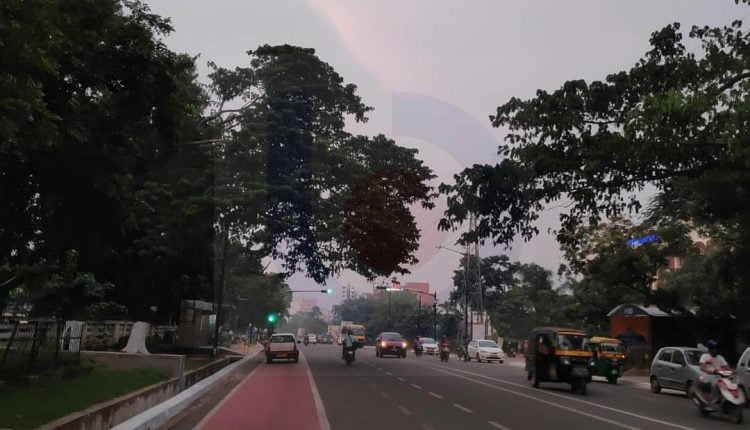World Cities Day: The End Result Of Climate Crisis Will Depend On How Urban Cities Sustain Themselves

As the world becomes more interconnected and dynamic, urban settings are taking centrestage as catalysts for prosperity. Cities, towns, and their surrounding areas act as powerful magnets for innovation, culture, and opportunities, alluring both talent and investment.
Urban living has already been embraced by more than half of the world’s population, and projections indicate that nearly 70 percent of us will live in cities by 2050. How are urban areas adapting to the ever-evolving global landscape and building resilience with the necessary speed and scale?
The answer is cities are the economic engines of nations. They generate more than 80 percent of the global GDP. Their powerful networks and machinery foster entrepreneurship and business growth and, in times of economic crisis, their diverse industries, services, and labour forces can jumpstart recovery.
Urban areas can also be an inequality trap, with overcrowding, pollution, poor infrastructure, and social injustice. In other words, thousands of buildings do not necessarily imply affordable housing and more employment opportunities don’t always guarantee decent jobs.
Approximately 1.1 billion people live in slums and informal settlements in urban areas, which entrenches poverty and limits opportunities. Whether the city is in the developed or developing world is irrelevant: there is extreme poverty in the bastis of Bhubaneswar, one of India’s leading Smart cities, as well as on the streets of London, where homelessness has surged by 21 percent since 2022. In simple words, it’s estimated that cities in developing countries will need US$4.5 trillion to $5.4 trillion in annual infrastructure investments between now and 2050.
Another challenge is making urban spaces liveable without contributing to environmental degradation. Cities consume about 75 percent of energy worldwide and generate 70 percent of the planet’s greenhouse gas emissions, according to the World Bank. Yet, they account for less than 2 percent of the Earth’s surface.
Cities have a unique capacity for resilience. In times of crisis, they often are better prepared to mobilise resources, coordinate responses, and offer basic services to navigate adversity. Lviv, in Ukraine, is a reflection of this: despite the backdrop of war, the city remains a trailblazer in urban planning and innovation, while providing assistance to displaced people.
Local governance is also instrumental in fostering resilience, ensuring cities can effectively respond to challenges and build back stronger. Somalia’s capital, Mogadishu, is working to substantially improve service delivery, bolster social protection, increase access to housing and employment, and implement cash-based interventions, which is vital in a city that is home to 400,000 people living in a state of protracted internal displacement.
Gender considerations in these settings are pivotal for boosting an equitable and inclusive urban environment. A case in point is Bhubaneswar City, where the public transport system reserved seats exclusively for women to shield them from sexual violence and harassment on public transportation. The city is also piloting other initiatives to ensure gender equality benefits not only women but society as a whole.
Urban areas, such as Cuttack a bowl-shaped neighbourhood in Odisha, are crucial battlegrounds in the fight against climate change. Cuttack is a 1000-year-old city plagued by frequent water pollution and flooding. Now, climate-resilient infrastructure means Cuttack and its neighbourhood can commute and live safely.
As populations grow, so does the demand for transport. Urban areas can be a catalyst for shaping cleaner, more efficient, and accessible mobility options. Cities such as Batumi in Georgia, Lusaka in Zambia, and San Juan Comalapa in Guatemala are already embracing sustainable transportation.
Urban settings have demonstrated their adaptability during times of uncertainty, such as the onset of the COVID-19 pandemic, which had a significant and transformative effect on informal economies and health systems.
In Kampala, Uganda, an e-commerce project initiated an experimental collaboration with informal food markets to maintain supply chains for small businesses, using an app to connect informal vendors with consumers. Ghana’s capital Accra is addressing health inequalities among urban poor communities while strengthening essential services for future pandemics.
Green bonds offer another financing mechanism, enabling cities to raise funds for sustainability projects with attractive terms for investors. Embracing policies such as carbon taxes can generate revenue streams while encouraging sustainable behaviour and reducing traffic congestion and emissions. So, cities can play a key role in protecting global ecosystems. By adopting nature-based solutions, we can boost climate resilience and restore biodiversity.
Since urban areas are mirrors of global challenges, they serve as experimental hubs to identify and apply local solutions that can have a global impact. While there isn’t a one-size-fits-all formula for attaining sustainable urban development, the innovative practices by cities across the globe offer guidance and strategy. When the urban landscape is well planned and managed, it can be a transformative force to accelerate quality of life. This means emphasising the idea of localising solutions, thinking globally, and acting locally – essentially reaching a global projection.
Local governments can play a leading role in making society a better place as it is said that the world’s major indicators of the climate crisis and SDG will be won or lost depending on urban areas.

Comments are closed.